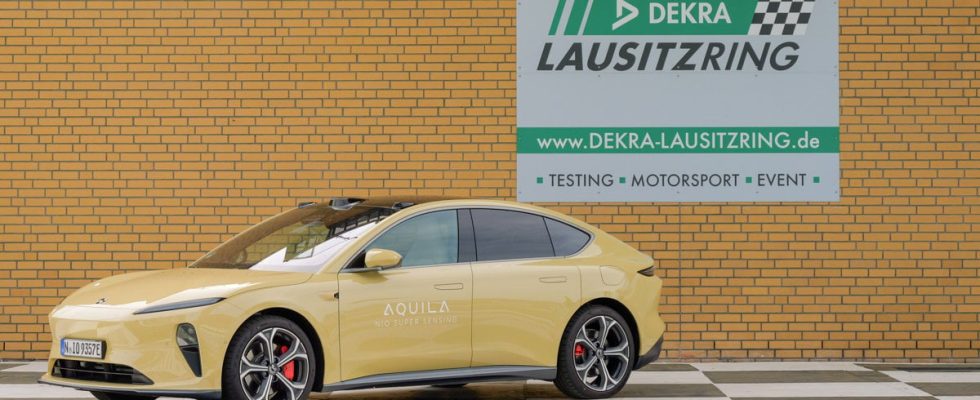The region around the German capital is developing into a new international automotive industrial hub. Tesla has a strong presence through its currently only European factory and now it is the turn of China’s Nio with a new technology center specialized in autonomous driving.
Knee-deep: Unsold electric cars flood European ports
First of its kind
The new venture means that Nio strengthens its presence in the region, as it has an innovation center in Berlin since 2023. It also has a design center in Munich since 2015. The new self-driving technology development center is the first of its kind for Nio outside of China.
Erik Punt has inspected the new Nio facility outside Berlin – Photo: Nio
“The opening of our European Center for Intelligent Driving Technology in Berlin marks a milestone in our journey as a leading global premium brand. Intelligent driving technologies are at the core of our business as a prominent pioneer in smart electric vehicles,” said Hui Zhang, Vice President of Nio.
In connection with the launch of the innovation center, a collaboration is also being started with the local university TH Deggendorf. The collaboration means, among other things, that you will sponsor their Formula Student team.
Must meet European expectations
The work on the new development center is led by Mirko Reuter, senior manager of self-driving technology, who has a background at Audi. The goal is to develop and adapt the products so that they match the expectations of the European market.
However, Nio has already been working hard on various types of systems for self-driving technology, so we headed south to the Lausitzring to test how the systems work in real life.
“Now electricity travels further” – Nio’s electric car drives 100 miles on a single charge
Large R&D investments
When Nio talks about its development and future, it is evident that it invests heavily in taking control and developing the key technologies required for the vehicles of the future. The battery pack, the electric motor, the control units for self-driving technology and so on. Nio wants to develop everything themselves.
Nio is best known for its battery exchange stations – Photo: Nio
At the Lausitzring, Nio demonstrated how the calculation system Adam and the sensor system Aquila with integrated LiDAR handle tough weather conditions. A water-spraying Volkswagen ID.Buzz drove in front of the Nio but then changes lanes whereupon a stationary car activates the Nio’s automatic emergency brake.
LiDAR can handle tough weather
During all trials, the car manages to brake properly and in most cases a collision with the dummy car is avoided. Nio shows that it tested with models from several competitors but which lack LiDAR and therefore fail to brake for the obstacle.
In situations where weather conditions are deficient, it becomes apparent that a camera-based solution for advanced driver assistance systems may not be sufficient, but LiDAR is required.
At the Lausitzring, we also had the opportunity to try Nio’s autonomous parking function. The car scans the surroundings and announces which options are available via the screen in the car. When one or more options appear, all you have to do is press the screen and the car will solve the entire maneuver itself – easy as pie.
Almost all Tesla Cybertruck recalled: Accelerator pedal can come loose
Heavy dazzle
On the way back from the Lausitzring, we get the opportunity to let the Nio ET5 stretch out on the Autobahn and here the autopilot works exemplary even at higher speeds. Admittedly, the conditions were perfect so even a system without LiDAR would probably have worked well.
The self-driving system impressed during the demonstration – Photo: Nio
However, it can be noted that the LiDAR system uses light that is much stronger than sunlight, which means that the sun cannot dazzle in the same way as with a camera.
Comprehensive sensor system
But it is not only the LiDAR system that is responsible for the data collection, but 32 other sensors contribute. Including five radar sensors, all to create as good a picture of reality as possible.
Nio works frequently with updating the car OTA (Over The Air) to add new functions. That this works smoothly is largely thanks to Nio’s domain-based electrical architecture.
By opening another development center in Berlin, Nio demonstrates that it is dedicated to adapting and developing solutions that appeal to customers in Europe. At the moment, Nio seems to be one of the manufacturers that has managed to tame LiDAR technology the best and with the new ET9 they will add more LiDAR sensors than before. We look forward to testing under Swedish conditions to see if Nio can handle slush, salt and snow.
Ban on driving on weekends: The threat from the German minister
